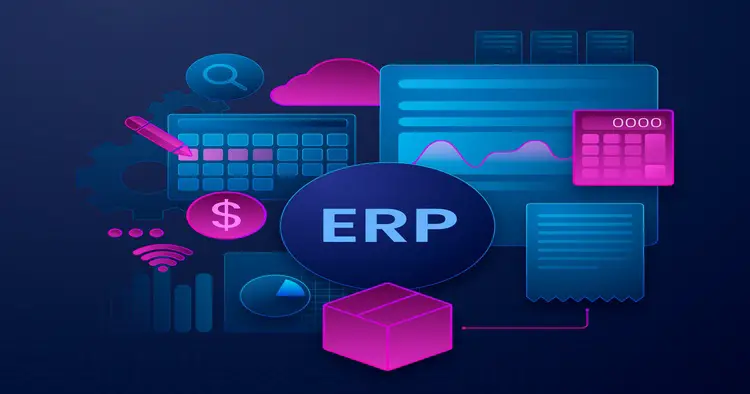
Last Updated | November 29, 2023
In the dynamic realm of e-commerce, where agility is paramount, staying ahead necessitates not just a robust online platform but also efficient backend operations. Shopify ERP integration emerges as the solution, providing a seamless approach to streamline business processes, elevate customer service, and foster growth. This blog post explores the advantages, potential hurdles, and optimal strategies for integrating Shopify with an ERP system, unlocking the full potential of your business.
Read Also: Shopify ERP Connector: What It Is And How It Works
Benefits of Shopify ERP Integration
Streamlined Operations
By integrating Shopify with an ERP system, automate and optimize key operational processes, including order management, inventory control, and fulfillment. Eliminate manual data entry, reduce errors, and ensure a smoother workflow across your business.
Real-Time Inventory Tracking
Accurate inventory management is pivotal for a seamless customer experience. Shopify ERP integration offers real-time visibility into stock levels, preventing stockouts, optimizing order fulfillment, and maintaining optimal inventory levels.
Improved Customer Service
Centralize customer data and order history through Shopify ERP integration, empowering your customer service team with a holistic view. This leads to personalized interactions, faster query resolution, and heightened customer satisfaction.
Enhanced Reporting and Analytics
Integrated data from Shopify and your ERP system provides comprehensive insights into business performance. Real-time reporting and analytics enable data-driven decisions, trend identification, process optimization, and overall business growth.
Challenges of Shopify ERP Integration
While the benefits are compelling, challenges during the integration process may include:
Integration Complexities
Differences in data structures, workflows, and system compatibility can introduce complexity. However, with the right expertise and support, these challenges can be overcome.
Data Migration Issues
Ensuring a smooth and accurate data transition from existing systems is crucial for maintaining data integrity and ensuring operational continuity.
Training Staff to Use the Integrated System
Effective training for staff is essential to maximize the benefits of the integrated system, introducing new processes, workflows, and functionalities.
Ensuring Data Security
Data security should be a top priority during integration. Robust security measures, such as data encryption, access controls, and regular backups, are necessary to protect sensitive business information.
Best Practices for Successful Integration
Choosing the Right ERP Solution
Select an ERP system aligning with business needs and seamlessly integrating with Shopify. Research and evaluate different options to find the solution suiting your requirements.
Planning and Preparation
Thoroughly plan the integration process, including data mapping, workflow design, and system customization. Define clear goals, timelines, and responsibilities to ensure a smooth transition.
Testing and Monitoring
Conduct extensive testing to identify and resolve issues before going live. Regularly monitor the integrated system’s performance, addressing any emerging issues promptly to maintain optimal functionality.
Ongoing Support and Maintenance
Engage with experienced integration partners or consultants to provide ongoing support and maintenance services. This ensures the integrated system remains up-to-date, secure, and optimized for business needs.
Read Also: Top ERP for Shopify – Choosing the best ERP for Shopify Store!
Conclusion
Integrating your Shopify store with an ERP system is a potent stride toward scaling your business. Streamlining operations, optimizing inventory management, improving customer service, and gaining valuable insights unlock new levels of efficiency and growth. However, careful planning, addressing challenges, and adhering to best practices are crucial for a successful integration journey.
Embrace the power of Shopify ERP integration, propelling your business toward greater success and profitability. For agile business processes and operations, consider the expertise of Folio3 in Shopify ERP Integration.
FAQs
Q1: What is the primary benefit of integrating Shopify with an ERP system?
A1: The primary benefit is streamlining operations by automating key processes, such as order management and inventory control, leading to increased efficiency.
Q2: How does Shopify ERP integration improve customer service?
A2: Integration centralizes customer data and order history, empowering customer service teams with a holistic view for personalized interactions and faster query resolution.
Q3: What challenges might arise during the Shopify ERP integration process?
A3: Challenges may include integration complexities, data migration issues, staff training requirements, and the crucial aspect of ensuring data security.
Q4: How can businesses choose the right ERP solution for Shopify integration?
A4: Businesses should research and evaluate ERP systems, selecting one that aligns with their specific needs and seamlessly integrates with Shopify.
Q5: Why is ongoing support and maintenance crucial after Shopify ERP integration?
A5: Ongoing support ensures the integrated system remains up-to-date, secure, and optimized, addressing any emerging issues promptly to maintain optimal functionality.
Source: https://ecommerce.folio3.com/blog/unleashing-growth-through-powerful-shopify-erp-integration/






